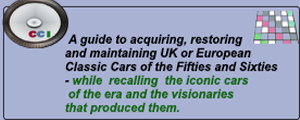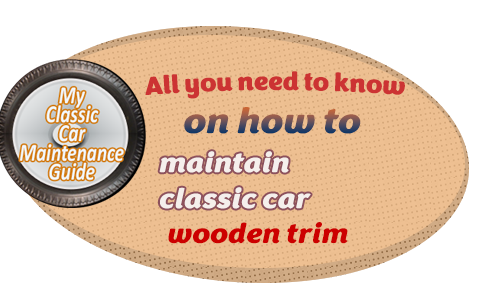 There are those classic car enthusiasts that say that every vehicle produced in the UK and Europe was an iconic- but the estate cars fitted with external wooden trim were among those that particularly fitted this category.
There are those classic car enthusiasts that say that every vehicle produced in the UK and Europe was an iconic- but the estate cars fitted with external wooden trim were among those that particularly fitted this category.
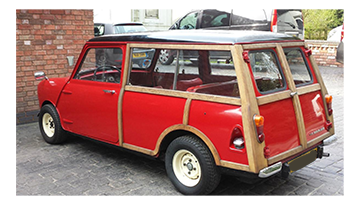 There were three models from the Morris Motors stable, the 1000 Traveller, the Oxford Estate and the Mini-Clubman Estate, as well as the Ford Squire Estate that particularly stand out, although there were a few from the luxury car sector that were also given the gift of wooden trim during this exciting period in UK classic car history.
Anyone who owns a classic car today fitted with external wooden trin has a particular responsibility in protecting and maintaining their vehicle.
There were three models from the Morris Motors stable, the 1000 Traveller, the Oxford Estate and the Mini-Clubman Estate, as well as the Ford Squire Estate that particularly stand out, although there were a few from the luxury car sector that were also given the gift of wooden trim during this exciting period in UK classic car history.
Anyone who owns a classic car today fitted with external wooden trin has a particular responsibility in protecting and maintaining their vehicle.
Exploring the Wood Types Utilised in Classic Car Exterior Trims
Classic cars frequently showcase an array of wood types in their interior trim. Correctly identifying the type of wood used in the vehicle trim will be crucial for effective maintenance and restoration. Be it either walnut to mahogany, each type of wood used will require specific attention .Cleaning and Polishing Wood Trim
To preserve the shine that a classic wood trim should give of, a gentle, wood-safe cleaner must be used to effectively eliminate dirt and grime while ensuring no damage occurs. Apply a premium wood polish to rejuvenate the natural lustre and safeguard the surface. Consistent cleaning and polishing not only improves the trim appearance but also will safeguard against long-term damage. Addressin Scratches and Imperfections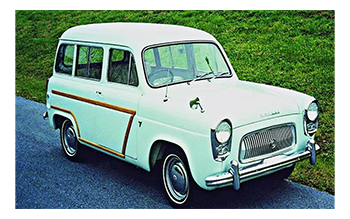 Over the years, the wooden trim on Classic Cars are liable to gather scratches and blemishes. For those looking for the maximum, addressing these imperfections calls for meticulous attention and access to the appropriate tools. Start by carefully sanding the affected area using fine-grit sandpaper, ensuring you follow the direction of the wood grain. Id need be a suitable wood filler should be applied to the scratch after which it should be sanded until a smooth finish has been acheived.
Whatever time needed should be taken to preserve the authenticity and value of the classic car.
Over the years, the wooden trim on Classic Cars are liable to gather scratches and blemishes. For those looking for the maximum, addressing these imperfections calls for meticulous attention and access to the appropriate tools. Start by carefully sanding the affected area using fine-grit sandpaper, ensuring you follow the direction of the wood grain. Id need be a suitable wood filler should be applied to the scratch after which it should be sanded until a smooth finish has been acheived.
Whatever time needed should be taken to preserve the authenticity and value of the classic car.
Maintaining Original Finishes
Maintaining the original finishes of the wood trim requires careful attention and expertise. Steer clear of harsh chemicals or abrasive materials that could potentially remove the genuine patina. Choose specialised wood finishes that offer protection while maintaining a timeless look. Maintaining the original finishes is essential for vintage car enthusiasts who value the historical importance of their vehicles. Choose finishes that align with the particular wood type, guaranteeing a cohesive integration that improves both appearance and durability.Look out for signs of Water Damage
Water damage can pose a significant risk to the wood trim of classic cars. Leaks, spills, or extended exposure to moisture can result in warping and discolouration. Immediate action should be taken through identifying the source of the water and thoroughly drying the impacted areas.Finding the Right Product.
There are a number of products on the market and it can be a challenge to find the the one that is most appropriate for mainatiaing classic car wood trim. Reputable, high-quality brands should be chosen to ensure effective restoration while maintaining the wood trim’s integrity.Make sure to add Protective Coatings
Protective coatings act as a shield against environmental elements that may damage wood trim. Once the surface has been cleaned and restored the e, it is essential to apply a thin layer of protective coating, effectively shielding the wood from harmful UV rays, dust, and pollutants. This extra layer contributes to maintaining the restored beauty for a much longer time frame enhancing its appearance for the long term. These coatings serve as a protective barrier, preserving the wood trim from environmental factors and inhibiting early deterioration. Consistent reapplication guarantees continuous protection and maintains an enduring aesthetic charm.Ensuring the Use of Hardware that matches the time frame when the vehicle was produced
In the process of restoring wood trim, it is essential to pay close attention to the hardware as well. It is essential that any replaced or refurbished hardware is consistent with the original design and period aesthetics.Identifying the Differences Between Varnish and Lacquer
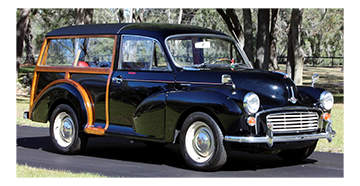 The wood trim of vintage cars is typically finished using either varnish or lacquer. Grasping the distinctions among these finishes is essential for effective maintenance. Varnish creates a durable, protective coating, whereas lacquer delivers a softer, more adaptable finish. Customise the restoration method according to the particular finish of the vehicle's wood trim.
If the results gained in house are not satisfactory there is no shame in employing the services of professional restorers. often the most prudent choice. Experienced professionals have the expertise to tackle complex wood trim challenges.
Professional restorers possess extensive experience, employing techniques and products that are often not accessible to the typical enthusiast. Engaging with specialists guarantees a thorough and genuine restoration process.
The wood trim of vintage cars is typically finished using either varnish or lacquer. Grasping the distinctions among these finishes is essential for effective maintenance. Varnish creates a durable, protective coating, whereas lacquer delivers a softer, more adaptable finish. Customise the restoration method according to the particular finish of the vehicle's wood trim.
If the results gained in house are not satisfactory there is no shame in employing the services of professional restorers. often the most prudent choice. Experienced professionals have the expertise to tackle complex wood trim challenges.
Professional restorers possess extensive experience, employing techniques and products that are often not accessible to the typical enthusiast. Engaging with specialists guarantees a thorough and genuine restoration process.
Back to the homepage- and don't spare the horsepower.
et4

